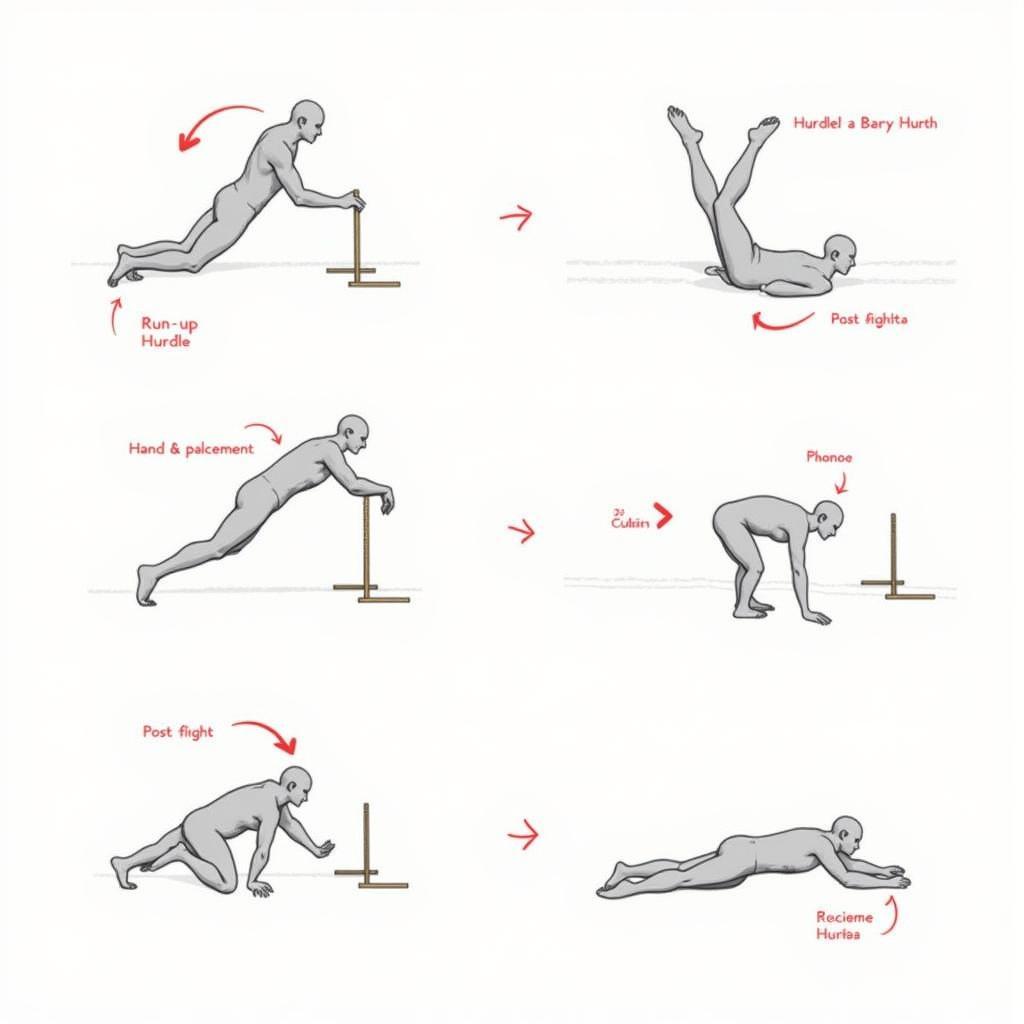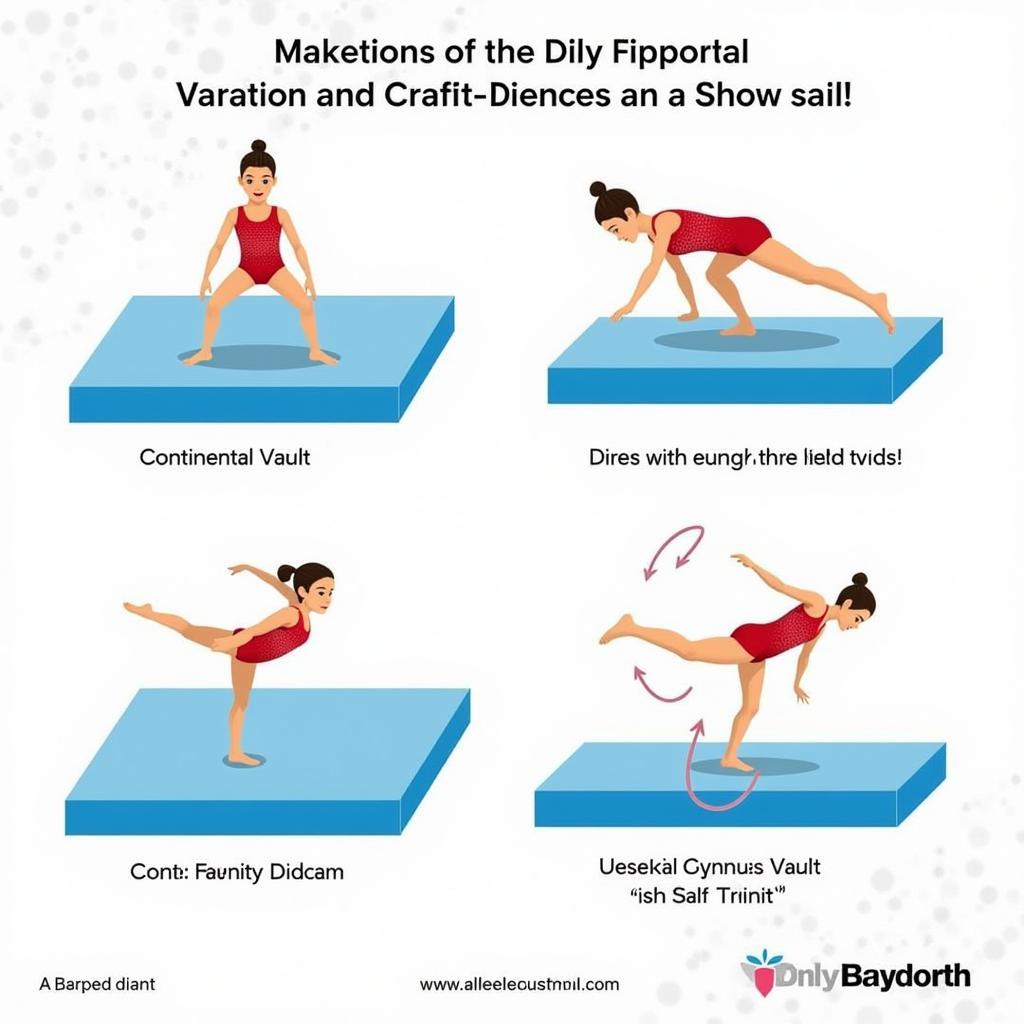The Continental Vault, a fundamental yet challenging element in gymnastics, requires a unique blend of power, technique, and precision. This guide delves into the intricacies of the Continental Vault, exploring its history, technique, common mistakes, and training tips for mastering this impressive skill.
Understanding the Continental Vault: History and Evolution
The Continental Vault, also known as the handspring front vault, has a rich history within the gymnastics world. Its origins can be traced back to the early days of the sport, evolving alongside other vaulting techniques. Initially, simpler handspring vaults were performed, but as the sport progressed, the Continental Vault emerged as a more complex and dynamic variation. It became a staple in both men’s and women’s artistic gymnastics, showcasing the athlete’s strength and control.
Breaking Down the Technique: Step-by-Step Guide
The Continental Vault is a multi-phase skill that demands meticulous execution. Let’s break it down into key steps:
- The Run-up: A powerful and controlled run-up is crucial for generating the necessary momentum. The gymnast aims for a consistent stride and a strong final step onto the springboard.
- The Hurdle: The hurdle involves a quick, upward jump onto the springboard, positioning the body for optimal hand placement.
- The Hand Placement: Precise hand placement on the vaulting table is essential for a successful vault. The hands should be placed shoulder-width apart, fingers pointing forward, allowing for a strong push-off.
- The Repulsion: This phase involves a powerful push-off from the table, utilizing the shoulder and arm strength to propel the body upward and forward.
- The Post-Flight: After leaving the table, the gymnast executes a forward rotation, maintaining body tension and control.
- The Landing: The landing requires balance and precision. The gymnast aims for a controlled landing with feet together, absorbing the impact and maintaining a stable posture.
 Phân tích kỹ thuật thực hiện Continental Vault
Phân tích kỹ thuật thực hiện Continental Vault
Common Mistakes and How to Avoid Them
Even seasoned gymnasts can encounter challenges with the Continental Vault. Here are some common mistakes:
- Insufficient run-up speed
- Incorrect hurdle technique
- Poor hand placement on the table
- Lack of repulsion power
- Loss of body tension during post-flight
- Unstable landing
Addressing these issues requires focused training and attention to detail. Drills such as handstand progressions, hurdle exercises, and strength training can significantly improve performance.
Training Tips for Mastering the Continental Vault
Mastering the Continental Vault requires dedicated practice and proper training techniques. Here are some essential tips:
- Consistent Conditioning: Focus on strengthening core muscles, shoulders, and arms.
- Repetitive Drills: Practice individual phases of the vault repeatedly to improve technique.
- Spotting and Coaching: Work with a qualified coach for guidance and spotting during practice.
- Visualization: Visualize successful execution to enhance mental preparedness.
- Gradual Progression: Start with simpler variations and gradually progress to the full Continental Vault.
Continental Vault Variations and Advanced Skills
Once a gymnast has mastered the basic Continental Vault, they can explore variations and progress to more advanced skills. These can include adding twists, incorporating additional rotations, and combining the Continental Vault with other elements in a routine.
 Các biến thể và kỹ năng nâng cao của Continental Vault
Các biến thể và kỹ năng nâng cao của Continental Vault
Conclusion
The Continental Vault is a testament to the athleticism and precision required in gymnastics. By understanding the technique, addressing common mistakes, and implementing effective training strategies, gymnasts can master this challenging skill and elevate their performance. Remember, consistent practice, dedication, and expert guidance are key to achieving success.
FAQ
- What is the difference between a handspring and a Continental Vault? The Continental Vault is a specific type of handspring front vault with a distinct hand placement and repulsion technique.
- How long does it take to learn a Continental Vault? The learning time varies depending on the individual’s athletic background and training frequency, but it typically takes several months to a year.
- What equipment is needed for a Continental Vault? A springboard, vaulting table, and appropriate safety mats are essential.
- Is the Continental Vault a beginner’s skill? No, it’s considered an intermediate to advanced skill that requires a strong foundation in basic gymnastics techniques.
- What are some common injuries associated with the Continental Vault? Wrist, elbow, and shoulder injuries are possible if proper technique and safety precautions are not followed.
- How can I improve my landing in the Continental Vault? Focus on maintaining body tension, absorbing the impact with bent knees, and sticking the landing with feet together.
- What are some drills that can help me master the Continental Vault? Handstand progressions, hurdle exercises, and strength training for core, shoulder, and arm muscles are beneficial.
Mô tả các tình huống thường gặp câu hỏi:
Người tập thường gặp khó khăn ở bước bật tay, dẫn đến tiếp đất không vững vàng. Họ cũng thường hỏi về cách tăng tốc độ chạy đà và cách đặt tay đúng kỹ thuật.
Gợi ý các câu hỏi khác, bài viết khác có trong web:
Bạn có thể tìm hiểu thêm về các kỹ thuật thể dục dụng cụ khác trên website của chúng tôi, ví dụ như “Handspring Vault” hay “Yurchenko Vault”. Ngoài ra, chúng tôi cũng có bài viết về các bài tập tăng cường sức mạnh cho vận động viên thể dục dụng cụ.